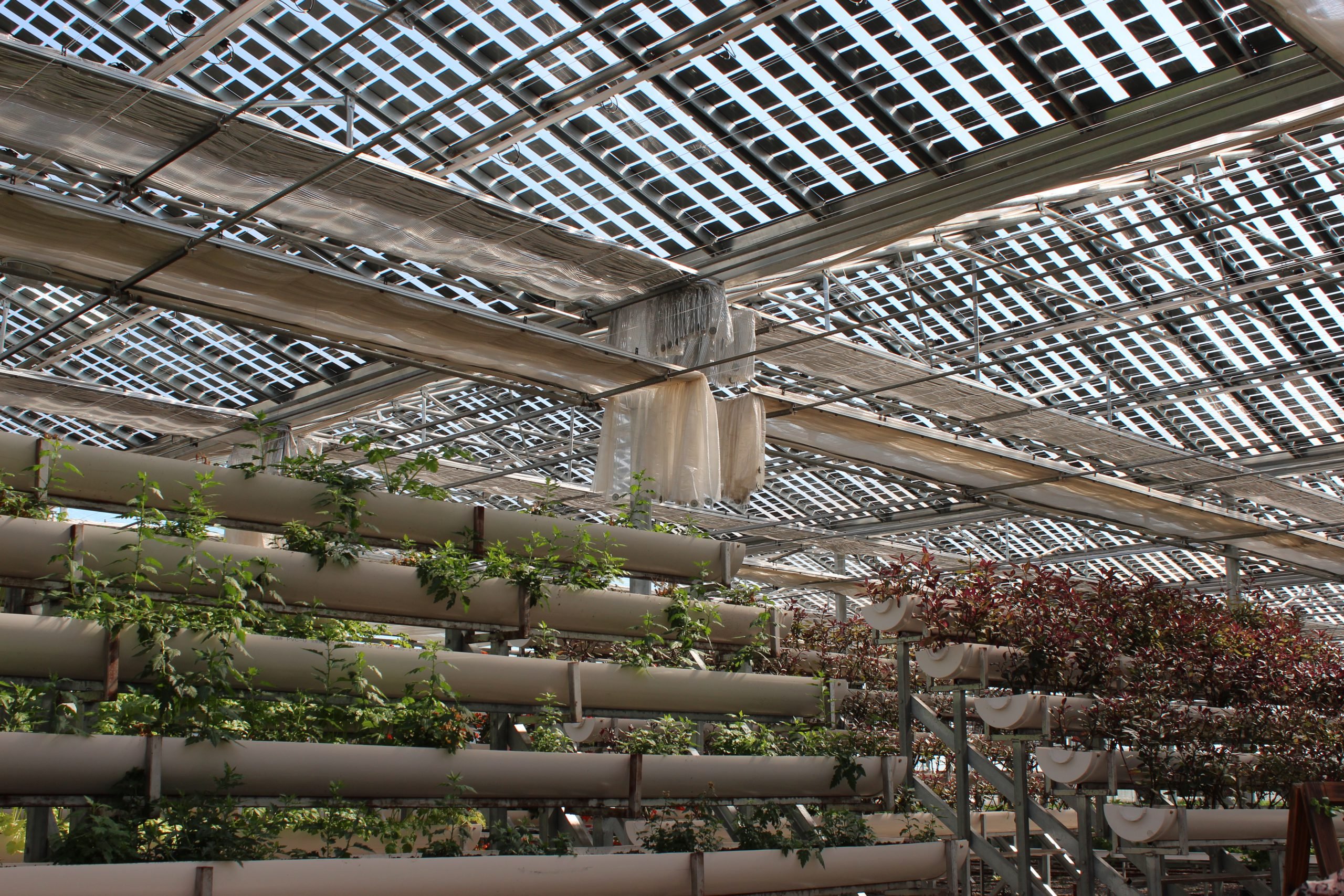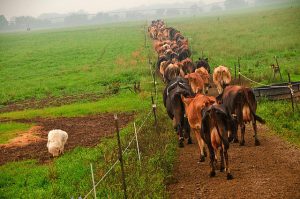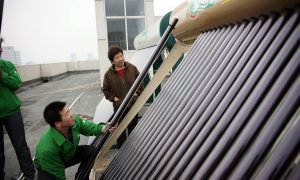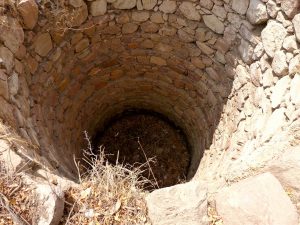Attaching solar panels to the roof of a greenhouse sounds simple enough. In practice, however, there are complications. What if the panels block out too much light? How do you covert the energy into power for the greenhouse? China already wastes lots of solar power so why create more? And how to classify it – as an industrial project or agricultural land?
chinadialogue visited Nesi Solar’s in Tianjin in search of answers.
From a distance Nesi Solar Farm looks like any other solar farm, with rows of black rectangular panels that stretch on for miles. But enter by the back way and it feels more like a giant greenhouse.
Agricultural solar projects have been around for over a decade but farms like this, which combine PV solar power generation with modern greenhouse agriculture, are still quite new to China. The Tianjin project covers 1,000 mu (0.7 square kilometres) and can generate 20MW of power. Beneath the blooming plant beds greenhouse technology is constantly at work, regulating the temperature, removing pests and distirbuting water.
The owners claim that their upgraded, integrated power grid saves them around 10,000 yuan (US$1,539) per Chinese mu (666 square metres) of greenhouse. And by installing the panels the overall productivity output of the land has increased.
Midnight blooms
To avoid blocking sunlight needed by the plants the panels have been arranged according to the plants' growth patterns. In 'PV agriculture', as its called, greenhouses are typically either half or completely covered in panels, according to the needs of the crops being grown.
Half-covered greenhouses are used to grow saplings and vegetables. Fully covered greenhouses make ideal homes for mushrooms.
Power up
You might think that electricity drawn from the solar panels is fed back into the greenhouse’s irrigation, heating and lighting system but in fact all the power generated is sold to a local grid. As far as the accounts are concerned, the two businesses are separate.
Many farms start in agriculture and when this becomes unprofitable they turn to power generation as a second source of income. For companies like Nesi the primary source of income is the electricity, not crops.
Gao Xianggen, deputy head of the China Photovoltaic Agricultural Working Committee, told chinadialogue that problems can arise when power generation is given priority over agriculture as food production could be disrupted.
So how do farms strike the right balance? According to a spokesperson for Nesi, the immediate plan is for the solar business to support the agricultural arm. In the future, they might expand into ecotourism.
But combining the two different types of infrastructure over a long timeframe can be problematic. Jiang Kejuan, a researcher at the National Development and Reform Commission’s Energy Research Institute explained that most solar power installations in China are built on permanent structures and have a lifespan of 25-35 years. However, agricultural greenhouses need to be replaced every 3-5 years. Nesi Solar has made great efforts to improve its greenhouse structure to ensure it lasts for at least 20 years – but most greenhouse don’t yet share this design.
Not all energy is created equal
The latest figures from the National Energy Administration (NEA) show that in 2015, 15GW of new solar capacity was installed in China, up 41% on the previous year and accounting for 25% of all new solar capacity globally.
This means China has overtaken Germany to become the world’s biggest generator of solar power. However, 20% of kilowatt hours of solar energy was wasted last year because of China's creaking grid systems which are difficult or impossible for new energy supplies to connect to. In Gansu far western China 31% of solar power was wasted last year.
With so much solar power going to waste is there a justification for further expansion? Jiang explained that the wastage comes from large wind and solar plants. Agricultural solar power plants are small and unlikely to be more than 60MW in size, which means most grid systems can by all the power they generate.
The NEA’s 13th Five-Year Plan has mandated the rapid development of China's distributed solar sector. This will mostly take the form of rooftop installations on buildings in industrial parks and development zones, and on public buildings and private homes. It also mentioned plans to build solar power generators on farmland and even fish farms – hence the new rise of agricultural solar. Chinese leaders have predicted solar capacity to reach 70 GW by 2020 – giving huge scope for expansion in the agricultural solar sector.
Industry standards
But growth will not come without risk. In most cases agricultural solar can be classed as agricultural infrastructure. That means there’s no need to apply for permission to change the use of agricultural land. But a recent investigation by the land and agricultural authorities in Yunnan province, southwest China, found PV agriculture projects are classed as construction, which means farmers will have to get new permits of risk the consequences.
At Nesi, the land was previously lying empty so reclassification was not needed.
Currently the solar sector has always been tightly regulated by local and central government. But in recent years the industry has exploded and the old pricing system is struggling to keep up. In 2014 the NEA said renewable energy subsidies would be reduced on a regional basis. In some provinces industry insiders complain that subsidies are not being paid at all.
This year’s government work report called for the development of energy-saving and environmentally-friendly industries, with these set to become one of China’s main economic pillars. However, there are still no universal industry standards or inspection bodies for China’s agricultural solar sector.
Industry standards are unlikely to emerge soon. More likely to emerge are standards for broader sectors, such as solar power generation, mushroom farming and fish and livestock farming. For the meantime, agricultural PV farmers will continue to wear many hats.







